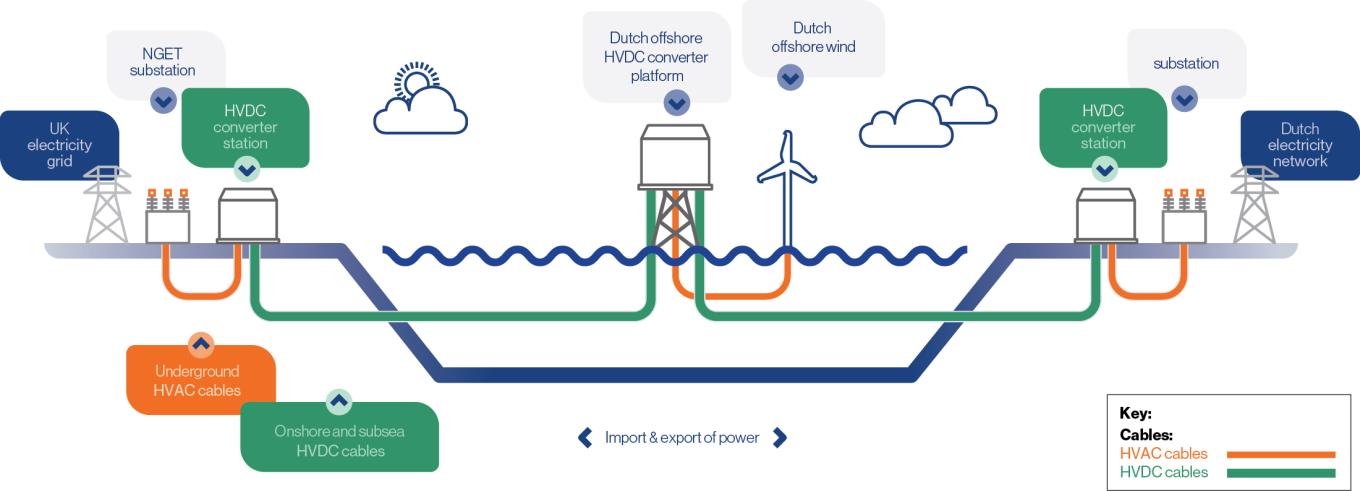Project overview
National Grid Ventures (NGV) is developing plans to build LionLink, a new subsea electricity cable (known as an interconnector) between the UK and the Netherlands together with our Dutch partner TenneT.
LionLink will connect to a Dutch offshore windfarm, connecting the GB and Dutch electricity grids. LionLink will play an important role in reducing the UK’s reliance on fossil fuels and supporting the UK government’s objectives to create a secure, reliable, and affordable energy supply for UK households.
What is an interconnector?
Interconnectors are subsea electricity cables that enable the sharing of energy between countries, improving system resilience during periods of high demand.
Interconnectors help strengthen the security and reliability of different energy systems, and lower consumer bills.
NGV already has six interconnectors across the UK with a combined capacity of 7.8 gigawatts, comprising of BritNed, IFA 1, IFA 2, Viking Link, North Sea Link and Nemo Link.
LionLink is an Offshore Hybrid Asset (OHA). OHAs are seen as the next generation of interconnector, that will connect offshore wind farms to multiple countries. In addition to facilitating the sharing of energy between countries, OHAs will also help to speed up the connection of offshore wind and maximise the use of wind generation.
Our proposals to date
The proposed elements of the of the project include:
- Kiln Lane Substation
- Underground high voltage alternating current (HVAC) cables between Kiln Lane Substation and the proposed converter station
- Converter station near Saxmundham
- Underground high voltage direct current (HVDC) cables between the proposed converter station and landfall site
- Landfall site at Walberswick
- Offshore HVDC cables from the proposed landfall site at Walberswick at the UK coast, to the edge of the UK’s Exclusive Economic Zone (EEZ)
LionLink will be the first step in the journey to a more interconnected North Sea grid. Take a look at our diagram for how this technology works:

Engagement to date
We held our first non-statutory consultation in 2022, where we outlined our initial siting and routeing options, including landfall sites at Walberswick, Southwold, Aldeburgh, and Dunwich. We identified alternative options based on the feedback, including:
- An alternative landfall site at Walberswick
- An alternative underground high voltage direct current (HVDC) cable corridor to the north of Southwold
We held a second non-statutory consultation in 2023 to gather feedback on these alternative options, as well as our original siting options, such as converter stations and a substation.
Feedback received during both non-statutory consultations was used to refine the options for the project prior to submitting an Environmental Impact Assessment Scoping Report to PINS in March 2024.
Key statistics from our first two non-statutory consultations:
- Eight in-person events
- Four webinars
- Over 1,800 attendees to our in-person events
- Over 19,000 website visitors
- Over 200 attendees to our online webinars
- Over 1,500 submissions of feedback received
